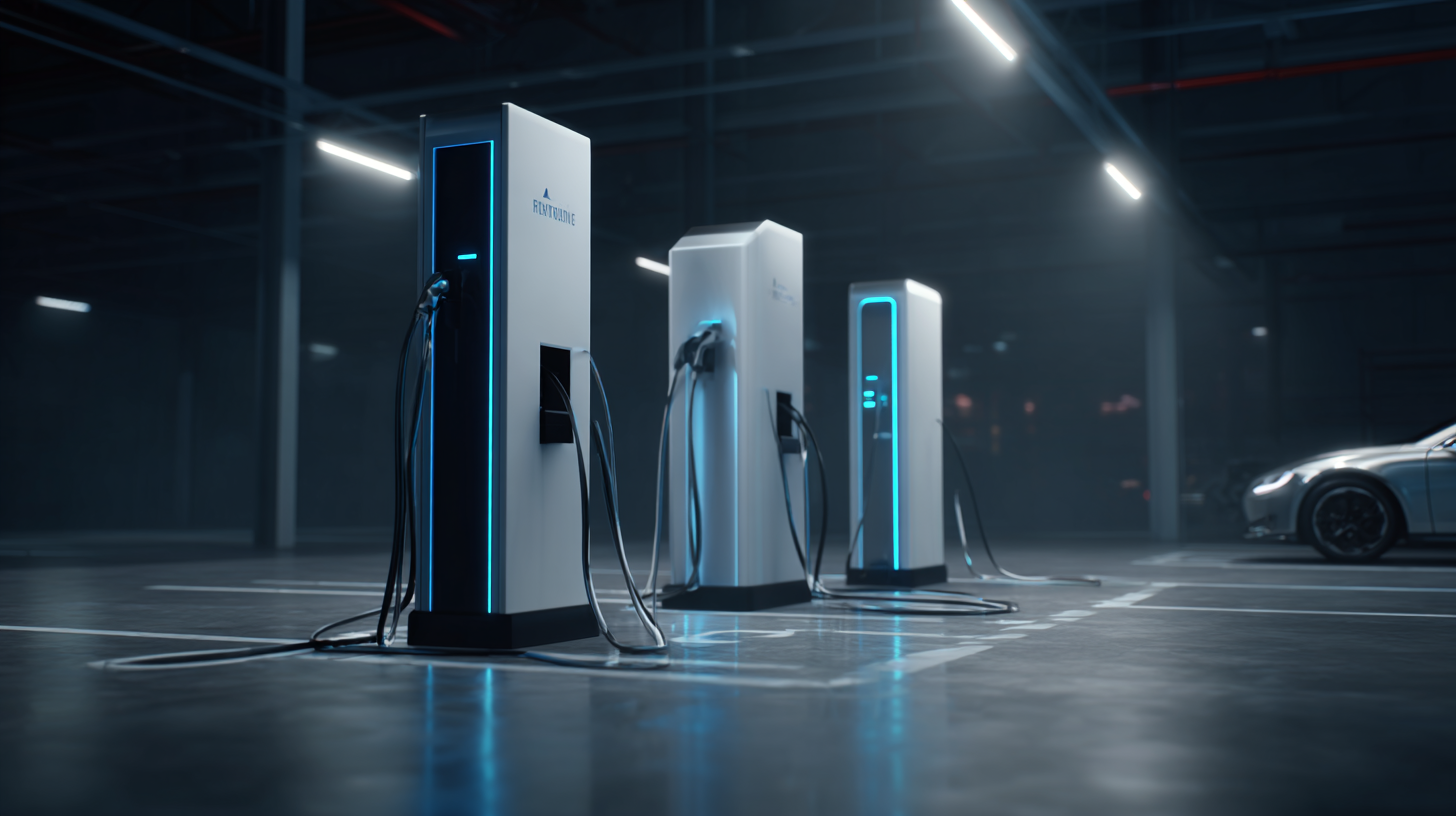Exploring the Best Battery Power Alternatives: Innovative Solutions for Modern Energy Needs
As the global demand for sustainable and efficient energy sources continues to escalate, the exploration of innovative solutions beyond traditional Battery Power becomes crucial. According to a recent report by the International Energy Agency (IEA), renewable energy sources are projected to account for nearly 80% of global power generation by 2030, highlighting a paradigmatic shift towards cleaner technologies. This transformation is not only driven by environmental concerns but also by the growing need for energy reliability and efficiency in an interconnected world.
 Industries are increasingly seeking alternatives that can complement or even surpass the capabilities of conventional batteries, such as advanced energy storage systems, hydrogen fuel cells, and supercapacitors. By exploring these cutting-edge innovations, we can address modern energy needs while paving the way for a sustainable future, thereby reducing dependency on traditional Battery Power systems.
Industries are increasingly seeking alternatives that can complement or even surpass the capabilities of conventional batteries, such as advanced energy storage systems, hydrogen fuel cells, and supercapacitors. By exploring these cutting-edge innovations, we can address modern energy needs while paving the way for a sustainable future, thereby reducing dependency on traditional Battery Power systems.
Innovative Technologies Revolutionizing Battery Power Alternatives
The demand for sustainable energy solutions has sparked remarkable innovations in battery power alternatives. Recent data from the International Energy Agency (IEA) reveals that the global energy storage market is expected to exceed 300 GWh by 2025, driven largely by advancements in technology. Companies are now exploring alternatives such as solid-state batteries, which promise higher energy densities and improved safety compared to traditional lithium-ion cells. These developments could significantly enhance electric vehicle (EV) performance and accelerate the shift toward renewable energy sources.
 Tip: When considering energy storage solutions, evaluate not just the capacity and price but also the environmental impact of the materials used in production. Advanced technologies, like flow batteries, utilize more abundant and less toxic resources, reducing the overall ecological footprint.
Tip: When considering energy storage solutions, evaluate not just the capacity and price but also the environmental impact of the materials used in production. Advanced technologies, like flow batteries, utilize more abundant and less toxic resources, reducing the overall ecological footprint.
Innovative power alternatives also include supercapacitors, which excel in rapid charging and discharging cycles. According to a report by MarketsandMarkets, the supercapacitor market is forecasted to grow from $1.8 billion in 2020 to $5.3 billion by 2025, reflecting a rising interest in applications where quick bursts of energy are crucial, such as in public transportation systems.
Tip: Look for products that incorporate hybrid systems, which combine the strengths of batteries and supercapacitors, offering both high energy capacity and quick response times for diverse applications.
Comparative Analysis of Renewable Energy Sources for Sustainable Power
As the demand for sustainable energy solutions grows, an in-depth comparative analysis of renewable energy sources becomes essential for addressing modern power needs. Solar energy, for instance, stands out for its abundance and accessibility. With advancements in photovoltaic technology, solar panels have become more efficient and affordable, making solar installations an attractive option for both residential and commercial applications. Moreover, solar power has the advantage of being easily integrated into existing structures, allowing for a seamless transition towards renewable energy usage.
Wind energy, another key player in the renewable sector, offers a different set of strengths. Wind turbines can generate substantial amounts of electricity, especially in coastal and open areas. Unlike solar energy, which is constrained by daylight hours, wind energy can be harnessed day and night, providing a more consistent source of power. However, the variability of wind patterns presents challenges in reliability that must be managed through energy storage and grid integration strategies.
Hydropower, utilizing flowing water to generate energy, remains one of the oldest and most reliable forms of renewable energy. Its ability to provide base-load power contributes significantly to stable energy infrastructure. Nevertheless, the environmental impact of dam construction and habitat disruption poses concerns, urging a careful reconsideration of how this potent energy source is utilized. In conclusion, while each renewable energy source brings unique benefits and challenges, a comprehensive approach combining multiple technologies may prove to be the most effective strategy for sustainable energy solutions.
Advantages of Fuel Cells: A Clean Energy Solution Without Batteries
As the world increasingly turns towards sustainable energy, fuel cells have emerged as a compelling alternative to traditional battery systems. Unlike batteries, which store energy electrochemically, fuel cells generate electricity through a chemical reaction between hydrogen and oxygen. This process produces only water as a byproduct, making fuel cells a clean and environmentally friendly energy source. Their ability to consistently produce power as long as fuel is supplied makes them an attractive option for applications ranging from portable electronics to heavy-duty vehicles.
One of the most significant advantages of fuel cells is their efficiency compared to conventional energy systems. Fuel cells can achieve higher energy conversion rates, translating into better performance and longer operational periods. This technology can also be seamlessly integrated into existing infrastructures, revitalizing energy portfolios without the need for extensive investments in new hardware. Furthermore, the development of hydrogen production methods is growing, offering a pathway to further enhance the scalability and sustainability of fuel cell technology. As cities and industries push for cleaner energy, fuel cells stand out as a promising solution that could reshape our energy landscape.
Advantages of Fuel Cells Compared to Traditional Battery Alternatives
The Role of Supercapacitors in Modern Energy Storage Systems
Supercapacitors are emerging as pivotal components in the modern energy storage landscape, particularly in the context of evolving needs driven by renewable energy integration and the push toward carbon neutrality. As traditional power sources face limitations, supercapacitors offer rapid charging and discharging capabilities that make them suitable for various applications, from portable energy systems to large-scale storage solutions. Their unique attributes allow them to bridge the gap between conventional batteries and capacitors, enhancing the efficiency and reliability of energy storage systems.

Recent developments in the energy sector, such as strategic partnerships focused on innovative storage solutions, underline the growing importance of technologies like supercapacitors. The Chinese government's commitment to carbon neutrality has accelerated the demand for more efficient energy systems. For instance, as the portable energy market anticipated a significant growth rate fueled by outdoor activities, supercapacitors are well positioned to meet these demands. Additionally, advancements in energy storage technology are crucial for stabilizing power systems that increasingly rely on variable renewable sources like wind and solar, further emphasizing the role supercapacitors will play in the transition to a sustainable energy future.
Exploring Hybrid Energy Systems: Blending Tradition with Innovation
Hybrid energy systems are increasingly seen as a feasible solution to address urban energy generation challenges. Recent research highlights the importance of techno-economic analysis in evaluating the sustainability of these systems. By combining diverse energy sources, such as renewable solar, hydrogen, and conventional forms of energy, cities can enhance their resilience against fluctuations in energy demand and supply. A comprehensive review indicates that integrating hybrid systems can significantly reduce reliance on fossil fuels, which is crucial in mitigating climate change effects and environmental degradation.
Moreover, advancements in artificial intelligence and energy management solutions are revolutionizing the performance of hybrid energy storage systems. For instance, the utilization of innovative algorithms has shown promising results in optimizing the lifespan and efficiency of photovoltaic microgrids. Hydrogen energy systems, in particular, are gaining traction as they not only provide energy storage but also offer a sustainable integration pathway. The evolution of these technologies could play a pivotal role in transforming urban landscapes, making them more sustainable and energy-efficient. As cities continue to grapple with energy security, hybrid energy systems emerge as a potent strategy for blending traditional energy sources with innovative solutions.
